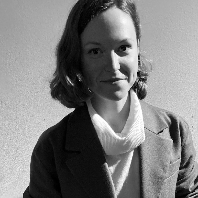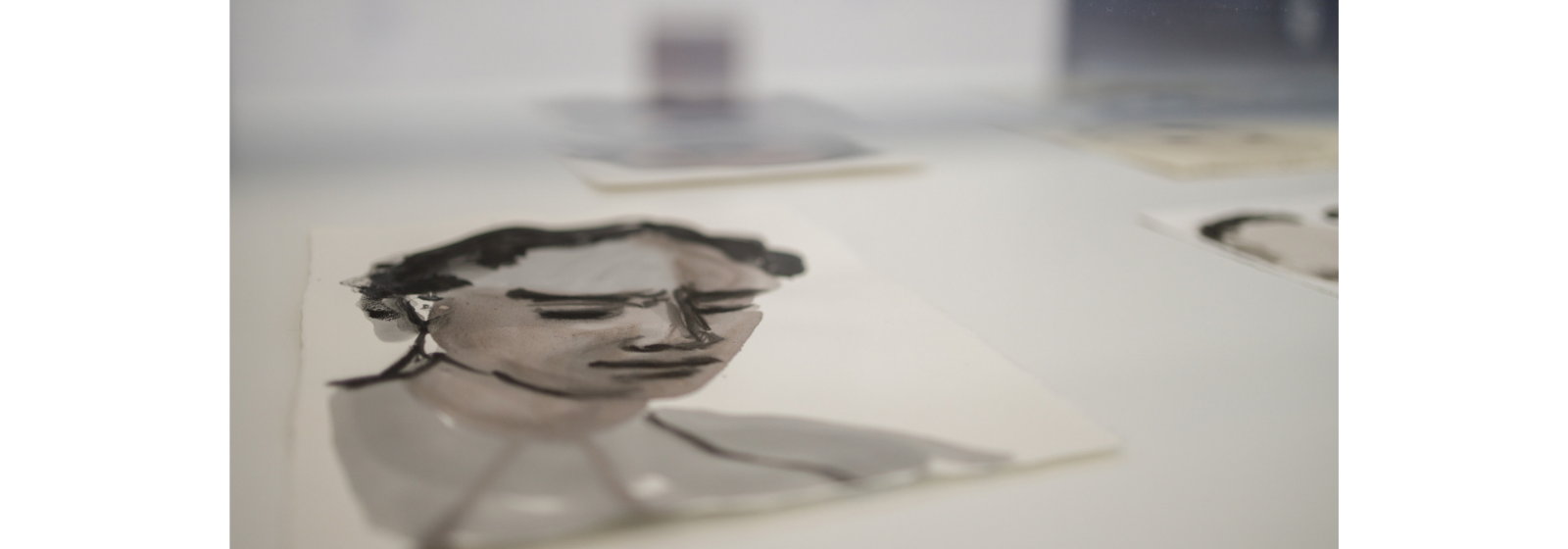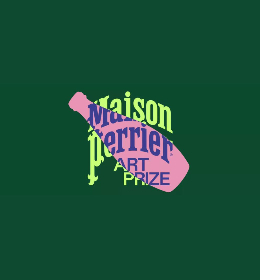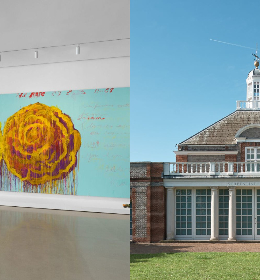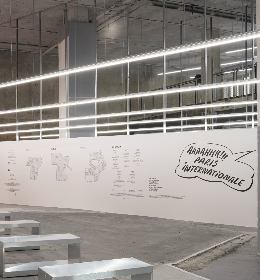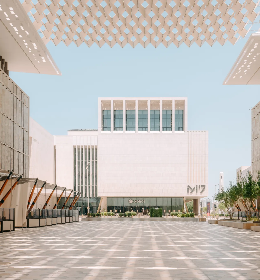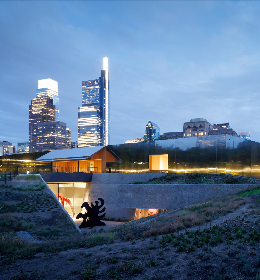Starting from the late 18th century in the collective mind of the Western people the Balkans were an exotic European Orient. From a Eurocentric point of view, the Balkan «Other» existed before and nowadays it continues to exist. Here the notion of the “Other”, which was studied in a profound way by the French philosopher of Jewish origin Emmanuel Levinas* (born in the Russian Empire, present day Latvia), can be seen as a symmetrical concept to Us and Me. In this context this definition of alienation expressing difference can be also applied to the current cultural situation between Western Europe and the Balkan region with its own type of society, characterised by various ethnicities, races, religions, political orientations and cultures.
* Levinas, Emmanuel (1974). Autrement qu'être ou au-delà de l'essence | Levinas, Emmanuel (1972). Humanisme de l'autre homme.

Timișoara National Art Museum, Timișoara, Romania. Courtesy of the Art Encounters Biennal
There is no doubt that Romania today has a rich local culture with its own characteristics: The existence of traditional area issues (ethnic, including all those concerning folk culture; religious, military and nationalist); a state of mind and mentality of its own; socialist heritage that may distance Eastern Europe from the values of Western Europe. And as a consequence – the existence of a post-socialist nostalgia for the past with a definite social identity among citizens and with a shared project for the future.
As an example of recent changes in perception, we can mention some of the main features of the large-scale contemporary art biennial Art Encounters that has been held since its foundation in 2015 in the city of Timișoara. Conceptually, this biennial touched generally less onto the state of the region's «Other», less on the standard issues and problems of the 90’s with its themes of war and post-war time. All the clichés, myths, topics of trauma were avoided in a certain way. This opened up a possibility for a reflection on the current artistic situation in the region and allowed a focus on other subjects, which could be viewed from a global perspective such as: globalism versus regionalism, cosmopolitanism versus localism and Mankind’s general condition. After getting acquainted with the list of the international participants, we will be able to spot a few more emerging names within the Romanian contemporary art scene, which, over time, will worthily replenish the ranks of a scene that boasted such world famous names as were Adrian Ghenie or Serban Savu.

Ion Bitzan - View of the exhibition, Secret Wing, curated by Maria Rus Bojan and Bogdan Ghiu, at Timișoara National Art Museum, 2021. Photography by Petru Cojocaru.
Proposing different art exhibitions at the same time (2021 edition: Secret Wing; How To Be Together, Landscape in a Convex Mirror ; Seasons End) in various venues all across the city of Timișoara under the umbrella of the same concept, the biennial unites all these addresses of cultural significance in one network of desired destinations even out of the context of the event.
The biennial’s public art displays, redefining our understanding of contemporary curatorial practises through the choice of the themes to explore, declare professional accuracy and elegance in presenting the material. As an example of such a profound work we could mention the exhibition Secret Wing which was held within the framework of the fourth edition of Art Encounters at the Timișoara National Art Museum in collaboration with Interart Triade Foundation. The curator of the exhibition Maria Rus Bojan in collaboration with the poet and philosopher Bogdan Ghiu, proposed a certain rethinking of the visual art of recent decades through the prism of poetry. The 80s were chosen as an appropriate moment for the journey’s departure, which became a turning point in the change of inner consciousness and a catalyst for large-scale social changes and artistic awakening. The works of emerging artists such as Alin Bozbiciu (1989, Sângeorz-Băi), Iulia Nistor (1985, Bucharest), Traian Cherecheș (1989, Bucharest), Nora Turato (1991, Zagreb) were exhibited along with already recognised masters of contemporary international art world. The works of Anselm Kiefer, Marlene Dumas, Rene Daniels, Ulay, Sophie Calle, Vivian Sassen, Sigalit Landau, Lucas Arruda, were for the first time ever exhibited in Romania alongside well-known national masters Constantin Flondor, Cornel Brudaşcu, Ioan Sbârciu and Ioan Aurel Mureșan. It could be considered as a significant historical event in the local art scene.

Vlad Basarab - View of the exhibition, Secret Wing, curated by Maria Rus Bojan and Bogdan Ghiu, at Timișoara National Art Museum, 2021. Photography by Petru Cojocaru.
The subtlety of curatorial thought was demonstrated both in the choice of location and in the selection of exhibited works. The interiors of the traditional museum with significant collections of European and national art created a certain aura of mystery and understatement, which was filled with a certain connotation at the very moment of acquaintance with a separate art work. The location of the exhibition on several floors of the Baroque Palace gave a multifaceted meaning to the curatorial concept, which seemed to fall into a three-level narrative, which was connected by a common theme, but did not single out a separate level to the fore, thereby 'balancing' the various time periods of contemporary art history and balancing the contribution of each individual author to the general flow of a collective audio-visual-verbal masterpiece.

Viviane Sassen, Sophie Calle, View of the exhibition, Secret Wing, curated by Maria Rus Bojan and Bogdan Ghiu, at Timișoara National Art Museum, 2021. Photography by Petru Cojocaru.
Why is the city of Timișoara worthy of our serious attention?
This urban space full of contradictions of the region of Banat in Western Romania, being in a constant search for its identity, was chosen by The Commission of the European Union to become the European Capital of Culture in 2023. Having been elected firstly as 2021 European Capital of Culture, the city of Timișoara, due to the international health situation, had to change the calendar of cultural events and receive its promised status with a slight delay. Taking as an example the fourth edition of the Art Encounters Biennale, we once again became convinced that the human spirit is not afraid of any obstacles on the way to intercultural dialogue and mutual enrichment through contemporary discourse and direct contact with art.

Ion Bitzan, Ghérasim Luca - View of the exhibition, Secret Wing, curated by Maria Rus Bojan and Bogdan Ghiu, at Timișoara National Art Museum, 2021. Photography by Petru Cojocaru.

Ioana Nemeș - View of the exhibition, Secret Wing, curated by Maria Rus Bojan and Bogdan Ghiu, at Timișoara National Art Museum, 2021. Photography by Petru Cojocaru.
The city of Timișoara should be included without any doubt into our list of must-see art destinations in Europe in 2023 (and even before).
For more information about the Art Encounters biennial and Secret Wing please follow these links: Art Encounters / Secret Wing
To learn more about the upcoming events in 2023 and the cultural programme of the city of Timișoara: Timișoara 2023
Cover image: Marlene Dumas, Adonis Blushes, 2015-2016 Ink wash and metallic acrylic on paper 29.2 x 21.9 cm Courtesy of the artist, Defares Art Collection, Amsterdam, David Zwirner Gallery, New York/London/Paris, and Zeno X Gallery, Antwerp



